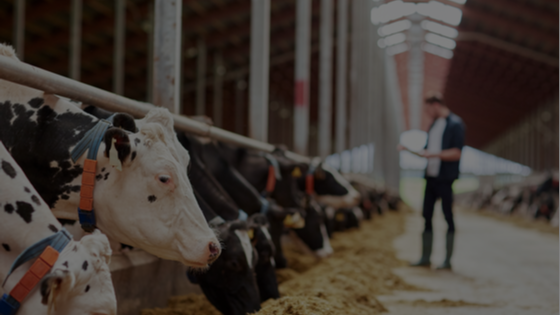As temperatures heat up around the U.S., we can expect to see a slump in fertility rates on cattle operations. Heat stress negatively affects your heifer and cow fertility by increasing days open, minimizing estrus detection, and causing embryonic and fetal abortion.
However, there are some things that you can do on your farm to better mitigate the effects of the season and keep your pregnancy rate from hitting those terrible lows.
Utilize a Fertility Protocol
Hot weather suppresses the expression of estrus in cattle. If your farm is primarily breeding on heat detection, you may find that your insemination and subsequent fertility rates decrease. Implementing and being fully compliant to your selected Fertility Protocol for timed A.I. can help mitigate low summer pregnancy rates. It has been shown that fertility protocols for the first insemination after calving during heat stress periods increased the herd's pregnancy rate compared to cows bred by heat detection. The increase in pregnancy rates can be attributed to eliminating reliance on heat detection and decreasing the amount of time until the first service. However, without proper cooling facilities on your farm, you can still experience embryonic loss.
Keep Cows Cool
Pregnant cows are most prone to pregnancy loss due to heat stress within the first days of development. The goal is to keep the cow's internal body temperature regular to continue fetal development. Cows do not efficiently dissipate heat and require a bit of additional help. Increasing access to cool drinking water and increasing airflow with fans throughout barns is an easy way to combat high temperatures and humidity. If cattle are outside, provide sufficient shade for them to get out of direct sunlight. Misters in areas with clean tractioned flooring, and away from bedding and bunk areas are preferred to help decrease your cows' temperature.
Embryo Transfer
Another option for maintaining pregnancy rates during the summer is embryo transfer. Embryo transfer helps bypass the timeframe when cows are most vulnerable to pregnancy loss. By implanting the embryo in a period when it is less susceptible to heat stress, it can cause pregnancy rates to remain at similar levels to those experienced in cooler weather months. As stated before, estrus expression is suppressed in the summer months, so embryo transfers are most successful when paired with a fertility protocol.
Adjust Feed Management
Cattle will automatically reduce their feed intake during hot weather, reducing a cow's overall body condition score. Body condition score is a significant factor to successful fertility. Review rations and adjust them to account for decreased intake. Also, try increasing the number of times per day you feed or increase the amount of feed available during the cooler periods of the day. Supplying 60 to 70 percent of the ration between 8 p.m. and 8 a.m. has been shown to prevent decreased feed intake during hot weather months successfully.
Though you can't control all cases of heat stress, you can implement proactive managment approaches to limit it's effects in your herd's fertility!
Sources:
How to Reduce Heat Stress in Dairy Cattle
Jeffery F. Keown and Richard J. Grant
Strategies for Managing Reproduction in the Heat-Stressed Dairy Cow
P. J. Hansen* and C. F. Are´chiga


